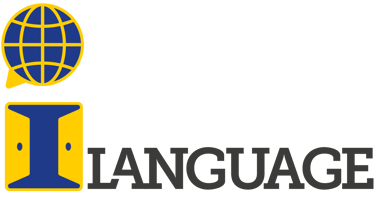Embracing the Concept of Inherent Language (iLanguage): Multilingual Children and Their Linguistic Identity
Raising children in a multilingual environment is a gift that opens doors to different cultures and improves their communication skills. However, children who grow up speaking multiple languages often have difficulty identifying a particular language as their own or recognizing themselves as native speakers. In this article, we will explore the challenges that multilingual children face when claiming a language as their native language and introduce the concept of “iLanguage” as a tool that empowers them to embrace their linguistic identity.
MULTILINGUALISMFAMILYLANGUAGES ACQUISITIONPARENTING
iLanguage Team
6/20/20232 min read


For many multilingual children, their language experience is characterized by a mixture of languages spoken at home, at school and in their community. As such, they may not fit the traditional notion of a native speaker associated with a single language. This can lead to uncertainty and confusion about their linguistic identity.
For these cases, the term “iLanguage” offers a new perspective on linguistic identity and recognizes the uniqueness of each individual's linguistic repertoire. Coined by linguist Carola Koblitz, the term “iLanguage” refers to an inherent language that is deeply interwoven with a person's identity. It goes beyond the conventional concept of the mother tongue and encompasses the languages to which multilingual children feel connected, regardless of the common features associated with the mother tongue.
Strengthening multilingual children:
Validation and acceptance: Encourage children to accept their linguistic diversity and reassure them that their multilingualism is an asset. Help them understand that their language skills are valuable and that there is no one “right” way to learn a particular language.
Valuing language repertoires: Let's create an environment where all languages spoken at home are valued and appreciated. Encourage children to use their languages freely and foster pride in their language repertoires.
Language communities: Connect children to communities where their languages are spoken, whether through cultural events, language courses or online platforms. This contact helps them develop a sense of belonging and strengthen their connection to their iLanguages.
Storytelling and cultural exploration: Engage children in storytelling activities that highlight their diverse linguistic heritage. Let's read books, tell familiar stories, and explore the rich cultural background of each language.
Linguistic role models and mentors: Introduce children to people who have successfully embraced their multilingualism and made it an integral part of their identity. These role models can inspire and encourage children to be proud of their own language repertoire.
As parents, we play a critical role in empowering our multilingual children to assert their linguistic identity. By understanding the challenges they face when identifying with more than one language, we can introduce them to the concept of iLanguage and help them appreciate their unique linguistic repertoire. Through affirmation, celebration, community connections, storytelling and role modeling, we can create an environment where multilingual children feel confident, proud and empowered in their language skills. Let's create a space where each language spoken becomes a valuable part of their identity and allows them to thrive as individuals in our diverse world.
We'll read each other soon! 😉


